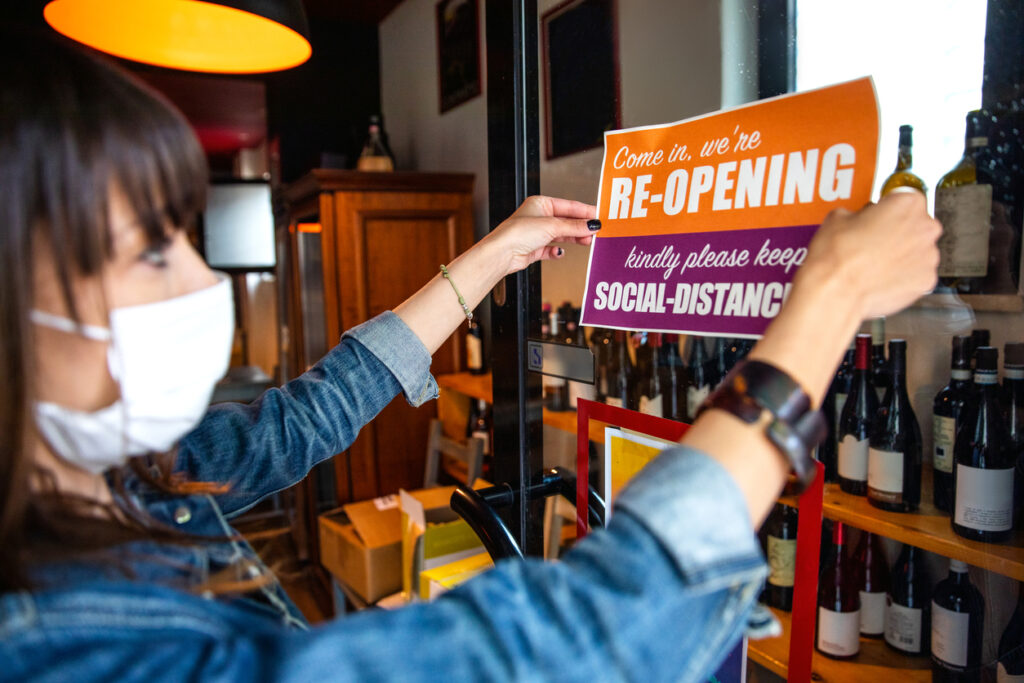It felt like it happened overnight. Offices closed. Entire teams started working at home — many for the first time. Now, as we begin to see signs of progress, the rush to reopen is real.
Coming back to the office isn’t a race, however. The safety of your employees is paramount. You can’t reopen your business without giving it some serious thought, planning, and preparation.
Remember, communication is a two-way street. Your employees need to be at the centre of everything you do.
We can’t tell you exactly when the right time to reopen your business will be, but we can share a framework for how to make the decision based on your unique circumstances.
In March, Salesforce shut down all of our offices for the approximately 50,000 employees we have around the world. It was a no-brainer. We needed to act swiftly to keep our employees safe during the coronavirus pandemic.
Two months passed before we felt ready to reopen. Our first locations? South Korea, Hong Kong, and China. Many asked us: why now? How did you pick those offices?
These are the steps we took to make that decision.
1. Create a leadership task force
This is a unilateral decision-free zone. Before you make a move that will impact many (if not all) of your colleagues, bring the right people together. Whether that’s your executive team or voices from across leadership levels, this group should represent your workforce as a whole.
Together, you’ll want to write a shared V2MOM, outlining your vision, values, methods, obstacles, and measures that will serve as your North Star throughout the process of reopening your business. This method of goal setting will help keep you on the right track even as circumstances change.
Learn more about how to use the V2MOM process to get aligned on goals and strategies across the company. Or create your own V2MOM with our free template.
Keep in mind, this isn’t something you set and forget. A V2MOM is a living document that requires attention and care, especially during quickly changing circumstances. As the situation evolves around you, so too must your V2MOM. Come back to this document on a regular basis to evaluate what’s new, what’s worked, and how you can improve.

At Salesforce, we brought together representatives from teams that would be most impacted by the work of reopening. That included our real estate, health and safety, security, human resources, and technology teams. From there, we put everyone’s ideas together in a Quip doc before we refined and prioritised the final V2MOM you see above.
2. Define what safety means to your organisation
The first method in our V2MOM is one we recommend for all businesses: Define what safety looks like in your business. Do you equip employees with new protective gear? Reduce capacity in your building? Create safety policies to encourage new behaviors? How do you execute all or some of the above at the right time in the most effective way possible?
To help guide you, consider the hierarchy of controls, regarded in the health and safety world as a useful way to determine the best solutions for potential occupational hazards.

Ultimately, you’ll need to tailor your standards to adhere to the local laws where you operate and to account for what would work for your specific organisation. Similar to your V2MOM, you should revisit your standards on a regular basis to ensure that they are right for the time. As new scientific evidence emerges, what works now may not be relevant in six months.
3. Decide your criteria for reopening your business
Now that you’ve got your strategy in place, it’s time to set the criteria that will inform your ultimate decision. Below are some external and internal factors Salesforce considered:
External:
- Government guidance: what local government restrictions are in place?
- Declining Covid-19 cases: are the cases in your area declining through a two-week period? Is widespread testing available?
- Health system capacity: do patient demands exceed your area’s hospital capacity? Are there enough intensive care beds and ventilators available to handle a second surge? Have non-Covid-19 procedures resumed?
Internal:
- Employee perspective: how many employees do you have? How many of them feel comfortable returning to the office?
- Leadership input: is the leadership where your office is located on board? Which teams need to return to the office?
- Office resources: do you have the resources to prepare the office for their return? Will you be able to maintain a level of health and safety for your employees over time?
To make it easier to evaluate some of the factors above, our leadership is using the Workplace Command Center, a new product from Salesforce that allows us to visualise multiple streams of information in a central location. For example, we’re using it to track employee wellness, shift management, training, and contact tracing. The single hub allows us to make quick, data-driven decisions and take action toward safely reopening our offices.

Learn more about the Workplace Command Center.
4. Communicate with your employees
Transparency is key throughout this whole process. Keep your employees informed of the latest developments. Share both your decisions and your decision-making process.
The following are tactics we’ve used to keep our teams plugged in to the latest information:
- Send daily emails to employees using Marketing Cloud.
- Cultivate discussion in a Chatter group dedicated to returning to the workplace.
- Host weekly all-staff meetings that are recorded and shared for those who can’t attend.
Remember, communication is a two-way street. Your employees need to be at the centre of everything you do. Listen to them. Ask them how they are feeling. Solicit feedback for areas of improvement. Lean on them, just as they will lean on you.
To get started, check out these free templates to create your own daily email updates and Covid-19 FAQ.
[cm_form form_id=’cm_65a14c3f5da64′]






